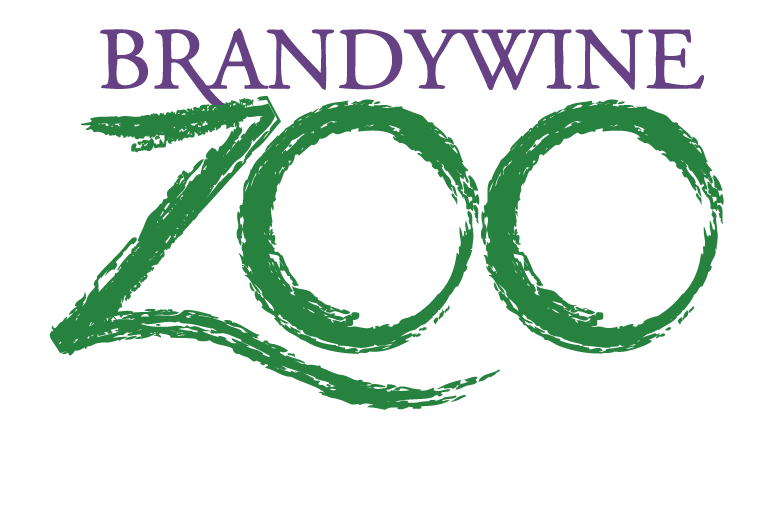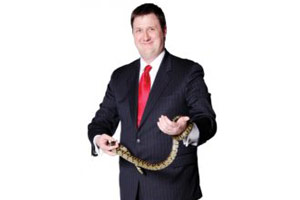Via Delaware Today
Mike Allen is the new executive director of the Delaware Zoological Society—the nonprofit that supports the mission of the Brandywine Zoo. During our chat in late May, just after he took the position, Allen talked about his research work with giant pandas, rescuing rare tortoises and his fondness of sloths.
DT: How’s everything going?
MA: It’s going well so far. It’s a fun, new adventure for me. It touches on a couple different things that I’ve done in my past. I started out in the zoo world in my mid-20s. I had an undergraduate degree in zoology. Then I moved into the corporate world for a while after getting my MBA. It lets me touch on both of those areas of my past, which is a lot of fun.
DT: Your bio talked about you being an international businessman and growing organizations, products and brands. Does that mean that the size of the zoo is going to double or you’re going to increase T-shirt sales?
MA: I think there are definitely a lot of opportunities to modernize and move this zoo from what it is into something new and different.
DT: What kind of changes might we expect?
MA: It’s still a little early in my tenure to talk about specific things. We developed a master plan a number of years ago and then we ran into the global financial crisis and that derailed a lot of that. And now we’re starting to look at that again and trying to figure out what we can do, what there’s funding for. How to make sure that the zoo continues to be the great place that it’s been for 110 years for new generations.
DT: There have been recent improvements with the addition of some animals and habitats, namely the red pandas.
MA: Last year, they were a huge hit for us. We got two sister red pandas from the Detroit Zoo last summer. They’ve been great. They’re incredibly popular. Everybody loves them. We’re looking to do more of that. We’ve got a few things planned for later this summer. We’re going to have three new reptile exhibits. When the Monkey House was destroyed, there was at least one reptile exhibit, maybe two exhibits in there, and since we had to move all of the animals out of there, we haven’t been able to have any reptiles visible to the public. We have some in the back that we use for programs, but we haven’t had any that were publicly visible. So we’ll have three new exhibits. They’ll be on the wall by the administration building, right by the new tamarin building across from the tiger. And there will be a species of snake, emerald tree boas, which are these beautiful, bright green snakes from Southeast Asia, as well as prehensile-tailed skinks from the Pacific and a species of gecko from New Caledonia in the South Pacific. It’s exciting. It’s good to have them back. It’s a way to use some space that we really weren’t using for exhibits. We’re all excited for them to come on out. They’re all in right now. We’ve ordered custom-built exhibits for them. They are pre-fabs. They’re cut in half. The company that we ordered them from does everything. They bolt it. They put it together. They have all the heat and water set up in it. They send it to us, and we just add a window and install it directly.
DT: You worked as a reptile keeper.
MA: It comes up every once in a while. When I applied for business school, I wrote in my application essay something about how I had experience handling venomous snakes and lizards. Somewhere later in my career as an MBA student, I saw my letter and somebody had underlined that and wrote, “May be good for investment banking.” It was fun.
DT: Do you have pets at home?
MA: My wife and I have a cat. He’s a 13-pound orange tabby. He was a rescue. His name is Tasman. We lived in Australia for a year a couple years back and Abel Tasman was a Dutch explorer who sailed around Australia. When we got the cat, he was very inquisitive and tried to check out all the different places in our place, so we named him for an explorer.
DT: Have you had reptiles as pets before?
MA: I never have. When I worked at Zoo Atlanta, I was studying giant pandas in China. I lived in China for four months, and while I was there, I took in a couple of endangered tortoises that were in the markets. They were actually on sale for meat. There are only a handful of them known outside of Southeast Asia. So they lived with me for a while, and, eventually, they came over to the U.S. When I got back, our general curator at the zoo asked if I would be interested in helping out. They were short staffed in reptiles. I was like, “Sure. What’s another part-time job?” And I ended up doing that for about a year before I went back to business school.
DT: You hear about rescue cats and dogs, but rescue tortoises—that’s pretty cool.
MA: I would go to the market and keep track of the different species that I would see. There are actually some species of turtles in China that you’d find at the market that some people have never seen otherwise.
DT: Is that how you got into species preservation?
MA: Yes. My undergrad was in zoology, and I was always interested in wildlife and saving endangered places. And I got into the animal behavior side of things because that was a natural interest of mine. I did that for a while, and I spent a couple years as a research associate when I was in Atlanta. I really liked the goals of that, but it wasn’t necessarily the perfect fit for my personality. I’m a little too much of an extrovert. I like dealing with people, so spending 10 hours a day, six days a week watching animals … I think some people think that’s the greatest thing in the world. It just wasn’t really for me. I was working there during 2001-2002 when the economy wasn’t doing so well, and I watched the institution struggle a little bit. I thought what they really needed was somebody who cares about wildlife, but at the same time understands how to run a business. So that was what directed me. Then I moved out here in 2007 after finishing my MBA, and I ended up working in the corporate world until I went to Australia for a number of years.
DT: How did you wind up studying pandas in China?
MA: I was a research associate. The zoo in Atlanta has two giant pandas. They are on long-term loan from the Chengdu Research Base of Giant Panda Breeding in Chengdu, China. Part of the agreement is that each organization sends a colleague to the other one in the spring and the fall. So every year, four months in the spring and four months in the fall, someone would go. I got selected to do that. I was next in line of the research assistants who hadn’t gone before and was interested in going. Basically, about six weeks before, my boss called me and asked me if I was interested and I said, “Absolutely. Let’s do it.” I didn’t have time to learn Mandarin or anything else. I basically had enough time to get all of my shots, for which now I am vaccinated against pretty much any tropical disease you can come up with that there’s a vaccination for. So I packed two suitcases. The woman who headed the giant panda project dropped me off. She was there for a couple days, and then I was on my own in the last big city as you’re heading west across China. I was there for four months. I studied giant pandas six days a week, 10 hours a day. I was there in the springtime, February to June 2002. I was looking at breeding behavior. They breed in the spring and then they birth in August. So the people who were there in the fall would watch the infants grow and develop and how they behave. I think we had 15 or 16 pandas we were watching.
DT: Do you have favorite animals at the Brandywine Zoo?
MA: I love the sloth. There’s nothing greater than a sloth. It’s the most bizarre animal ever. They move very slowly, but, at times, they can go quickly. They have a lot of personality. It’s just something cool and different. I’ve never gone for the really prototypical big cats, elephants. I’m a guy who likes hoofstock like antelope and deer—sort of oddballs. My favorite animal growing up was a tapir. We had a little plastic one in the zoo store, so I purchased that and it’s hanging out on my windowsill here. Of course, the tiger is our big star. The condors are just so stunning. I’m 6-6, so I’ve got a pretty good wingspan. They’ve got me by about 3 ½ feet.
DT: I believe you have some relatively new otters?
MA: Today I went by and the otters came over and were vocalizing toward me. It was a lot of fun. That’s one of the things that I love about the zoo. It’s not just visual. It really hits all of your senses. Taste, not so much, unless you get something to eat here. But you hear the animals. When I walk toward the tamarins, they stop and start chirping at me. And it’s this really cool, distinctive sound that if you otherwise didn’t realize that it was a monkey, you would just think it’s just some bird in the trees somewhere.
DT: I’ll have to say the Monkey House really had a distinctive odor.
MA: The smell is one of the things that everybody remembers. I don’t know if you’ve been by recently, but last week, it did come down. It was deemed not usable for animals. We had been grandfathered in to have animals outside the grounds because we predated the rule that said that all animals had to be within the main perimeter fence of the zoo. Once we moved those animals out of there, we couldn’t put any animals back there. But if we had been able to do something with that, it would have become offices. But the building was just too badly damaged. What was cool was we were able to have seven different species of marmosets and tamarins. But unfortunately, nobody planned for the tree to fall. It was an act of nature and we have to figure out how to move on as best we can.
DT: Your big fundraiser is coming up in September?
MA: It’s September 25. We’re going to have a number of different restaurants, hopefully, some breweries, as well. We’ll have beer and wine—a silent auction. It’s 5:30 p.m. to 9 p.m. It’s a private event, so you have to have a ticket to come to it.

